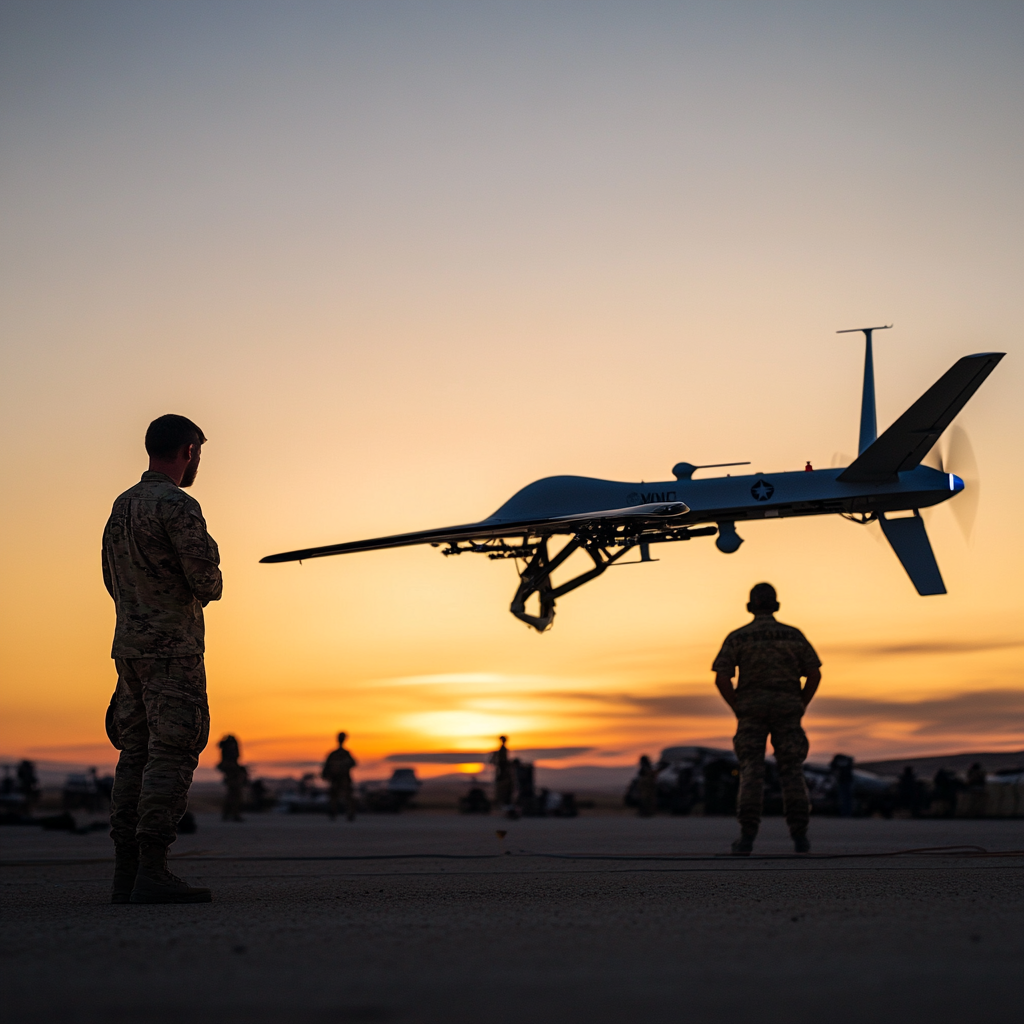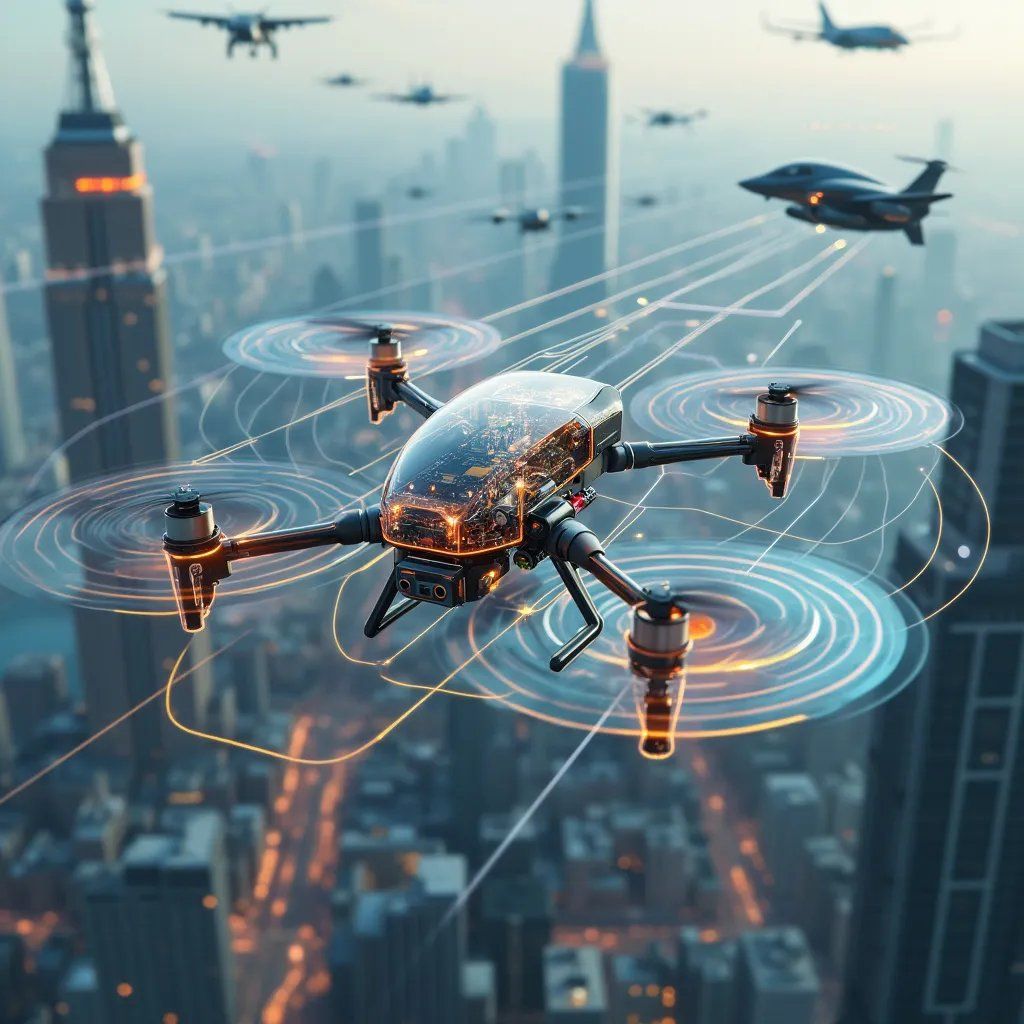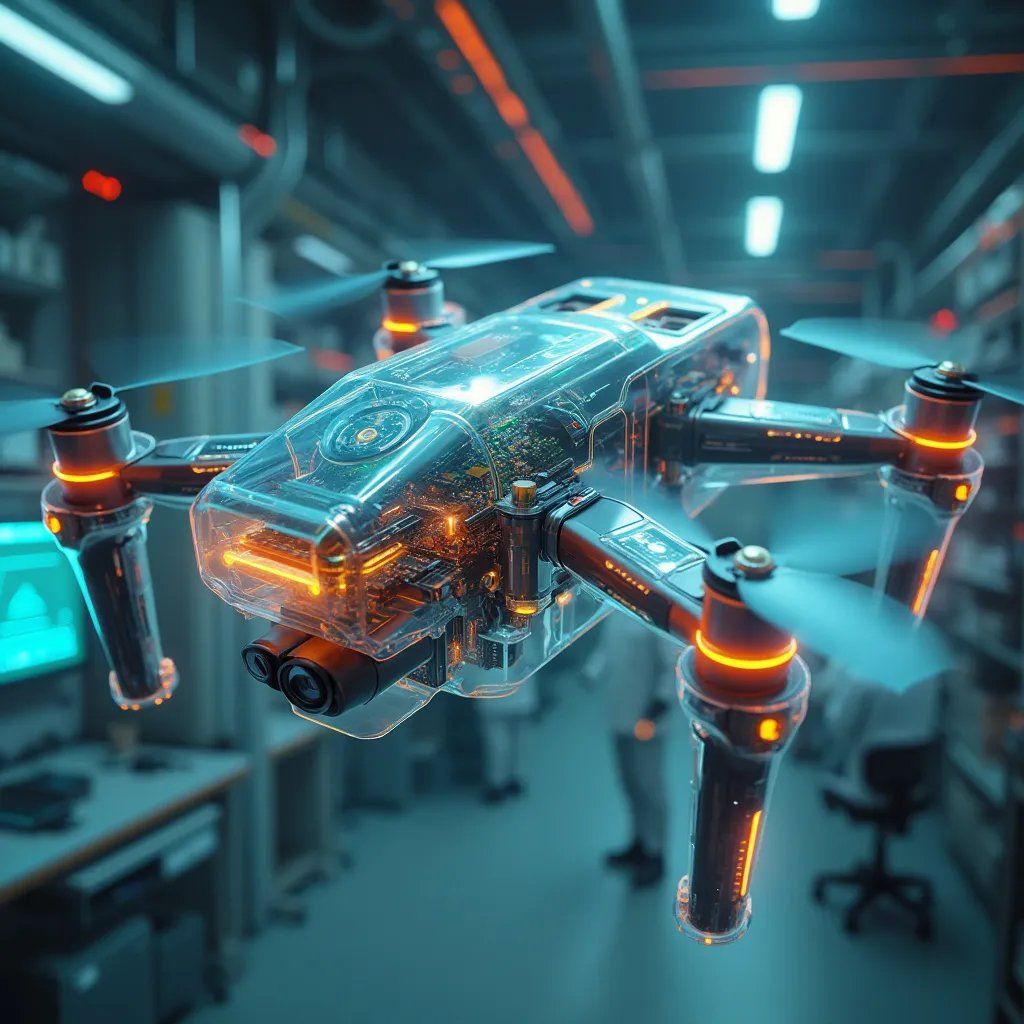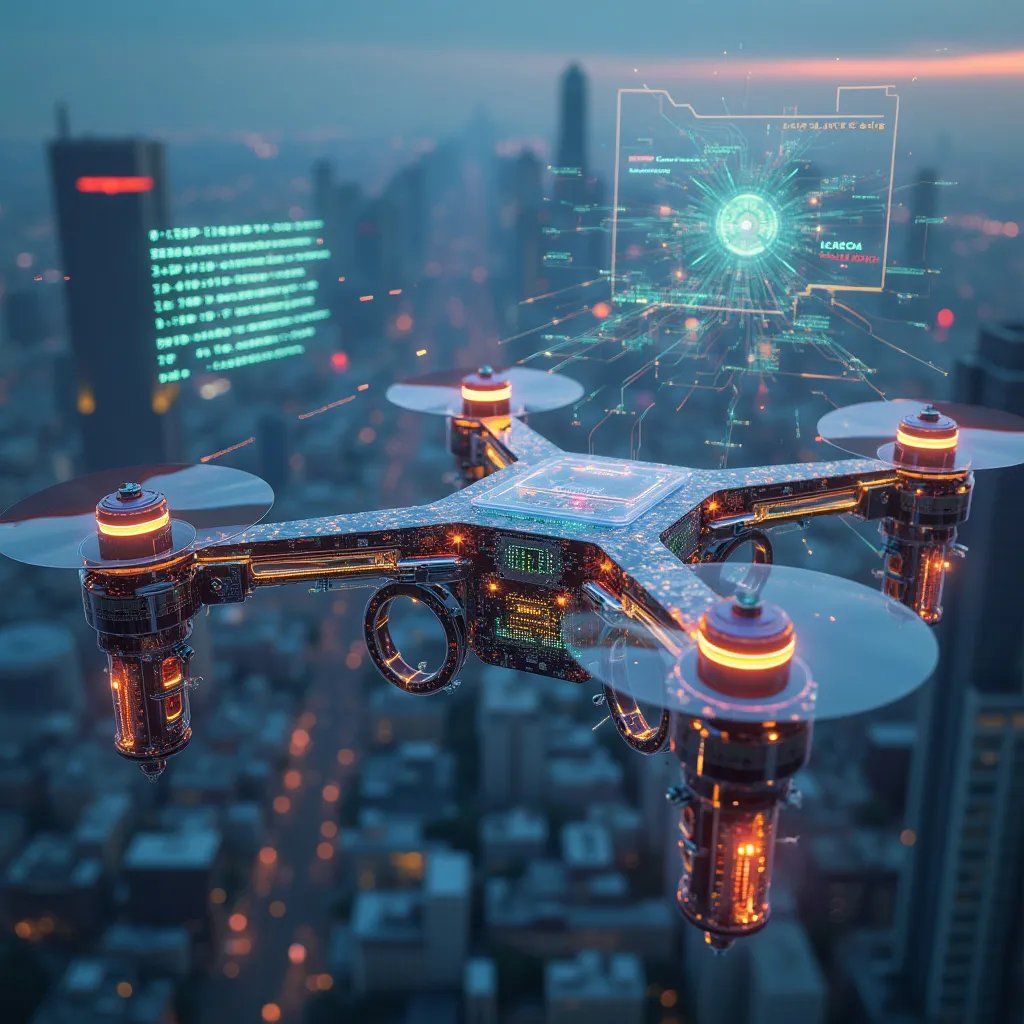Introduction
Hey there, drone enthusiasts and security buffs! Today, we’re diving into a topic that’s been buzzing around the UAV community: the challenges of getting drones from different countries to play nice together. It’s like trying to organize an international potluck where everyone brings a different dish – exciting, but potentially chaotic!
As drones become more prevalent in both military and civilian operations, the need for smooth collaboration across borders is skyrocketing. But here’s the kicker: it’s not as simple as just saying “let’s all work together.” There are some real head-scratchers when it comes to making drones from various nations operate as a cohesive unit.
So, grab your favorite beverage, and let’s explore the wild world of multi-national drone interoperability!
The Big Picture: Why Interoperability Matters
Before we dive into the nitty-gritty, let’s chat about why this is such a big deal. Imagine you’re coordinating a massive search and rescue operation after a natural disaster. You’ve got drones from the U.S., Japan, and Germany all eager to help. Sounds great, right? But what if they can’t communicate with each other or share data effectively? Suddenly, your dream team turns into a logistical nightmare!
Interoperability in multi-national drone operations is crucial for:
- Effective collaboration: Whether it’s military exercises, humanitarian missions, or cross-border law enforcement, drones need to work together seamlessly.
- Resource optimization: By sharing capabilities, nations can make the most of their combined drone fleets.
- Standardized responses: In crisis situations, having interoperable systems means faster, more coordinated responses.
- Technology sharing: Interoperability fosters innovation by allowing countries to learn from each other’s advancements.
The Interoperability Puzzle: Key Challenges
Now, let’s break down the main challenges that make multi-national drone operations feel like trying to solve a Rubik’s cube blindfolded.
1. Communication Protocols: Speaking the Same Language
Just like humans, drones need a common language to communicate. But here’s the rub: different countries often use different communication protocols. It’s like trying to have a conversation where one person speaks Klingon, another speaks Elvish, and a third communicates only in emoji.
The challenge lies in creating universal protocols that all drones can understand and use. Our DroneCrypt IFF system, for instance, tackles this by implementing a custom, low-latency communication protocol based on MQTT. But getting everyone on board with a single standard? That’s easier said than done.
2. Data Formats and Sharing: The Information Highway
Data is the lifeblood of drone operations. But when each country’s drones produce data in different formats, sharing becomes a headache. It’s like trying to complete a jigsaw puzzle where the pieces come from different sets – they just don’t fit together easily.
The goal is to establish common data formats and sharing mechanisms that allow for seamless information exchange. This includes everything from telemetry data to mission information and threat assessments.
3. Security and Trust: The Delicate Balance
Here’s where things get really tricky. Each nation has its own security protocols and trust levels. Sharing information and control with another country’s drones can be seen as a potential security risk. It’s a bit like inviting someone you just met to house-sit – there’s always that nagging worry in the back of your mind.
The challenge is to create secure, trustworthy systems that allow for collaboration without compromising national security. This is where technologies like blockchain and quantum-resistant cryptography come into play. Our DroneCrypt IFF system, for example, uses a blockchain-based authentication system to create a secure, decentralized network for drone identities.
4. Regulatory Frameworks: Navigating the Legal Labyrinth
Every country has its own set of rules and regulations governing drone operations. When you’re trying to coordinate multi-national missions, these differing regulations can become a real headache. It’s like trying to play a game where each player is following a different rulebook.
The challenge here is to develop international standards and agreements that allow for smooth cross-border operations while respecting each nation’s sovereignty and laws.
5. Hardware Compatibility: The Tech Tango
Drones come in all shapes and sizes, with different capabilities and technical specifications. Getting hardware from various manufacturers and countries to work together seamlessly is no small feat. It’s like trying to build a Lego masterpiece using pieces from different toy brands – they might look similar, but they don’t always fit together perfectly.
The goal is to develop universal interfaces and standards that allow different drone hardware to interact effectively, regardless of their origin or manufacturer.
6. Spectrum Management: The Invisible Challenge
Radio frequency spectrum is a finite resource, and different countries allocate it differently for drone operations. When you bring drones from multiple nations together, you might find them competing for the same frequencies. It’s like having too many people trying to talk on the same phone line – chaos ensues!
The challenge is to develop dynamic spectrum allocation techniques and international agreements on frequency usage for drone operations.
Innovative Solutions on the Horizon
Now that we’ve painted a picture of the challenges, let’s look at some exciting solutions that are emerging. It’s not all doom and gloom – the drone community is nothing if not innovative!
1. Universal Communication Interfaces
Researchers and companies are working on developing universal communication interfaces that can “translate” between different protocols. Think of it as a universal translator for drones. Our DroneCrypt IFF system, for instance, is designed with interoperability in mind, using widely compatible protocols as a foundation.
2. Blockchain for Trust and Security
Blockchain technology is emerging as a potential game-changer for secure, decentralized drone authentication and data sharing. By creating an immutable, distributed ledger of drone identities and activities, blockchain can help build trust between different national systems.
3. AI-Powered Adaptive Systems
Artificial Intelligence is being harnessed to create adaptive systems that can learn and adjust to different operational standards on the fly. These smart systems could potentially bridge the gap between different national protocols and data formats.
4. Cloud-Based Collaborative Platforms
Cloud computing offers a potential solution for data sharing and collaborative mission planning. By creating secure, cloud-based platforms, drones from different nations could access a common operational picture and share data in real-time.
5. Software-Defined Radios
To address spectrum management issues, software-defined radios (SDRs) are gaining traction. These flexible systems can adapt to different frequency allocations and communication standards, making them ideal for multi-national operations.
6. International Standardization Efforts
Organizations like NATO and the International Civil Aviation Organization (ICAO) are working on developing international standards for drone operations. These efforts aim to create a common framework that can be adopted across nations.
The Road Ahead: Collaboration is Key
As we wrap up our journey through the maze of multi-national drone interoperability, one thing becomes clear: the path forward is through collaboration. No single nation or company can solve these challenges alone. It’s going to take a global effort, bringing together governments, industry leaders, and innovators.
Here are some key steps we can take:
- Foster International Dialogue: We need more platforms for nations to come together and discuss these challenges openly.
- Encourage Open Standards: By promoting open, universally accessible standards, we can accelerate the development of interoperable systems.
- Invest in Research: Continued investment in research and development is crucial to overcome technical hurdles.
- Promote Cross-Border Exercises: Regular multi-national drone exercises can help identify and address interoperability issues in real-world scenarios.
- Develop Flexible, Adaptive Technologies: The future lies in creating technologies that can adapt to different standards and protocols, rather than trying to force a one-size-fits-all solution.
Conclusion: The Sky’s the Limit!
The challenges of multi-national drone interoperability are significant, but they’re not insurmountable. With innovative technologies, international cooperation, and a spirit of collaboration, we can create a future where drones from different nations work together seamlessly, whether it’s for humanitarian missions, environmental monitoring, or ensuring global security.
As we at Decent Cybersecurity continue to develop solutions like DroneCrypt IFF, we’re excited to be part of this global effort. The sky’s not the limit – it’s just the beginning!
So, what do you think? Are you ready to join the interoperability revolution? Let’s work together to create a world where drones know no borders!
References
- NATO Standardization Office. (2022). STANAG 4586 – Standard Interfaces of UAV Control System for NATO UAV Interoperability.
- International Civil Aviation Organization. (2023). Unmanned Aircraft Systems Traffic Management (UTM) – A Common Framework with Core Principles for Global Harmonization.
- Sharma, V., & Kumar, R. (2023). Blockchain-Enabled Trust Fram







